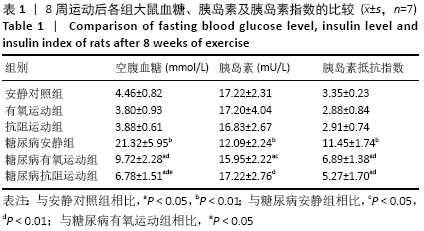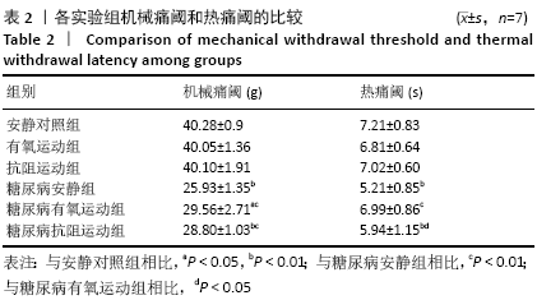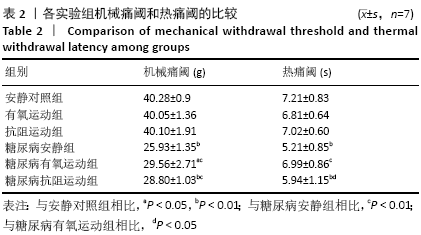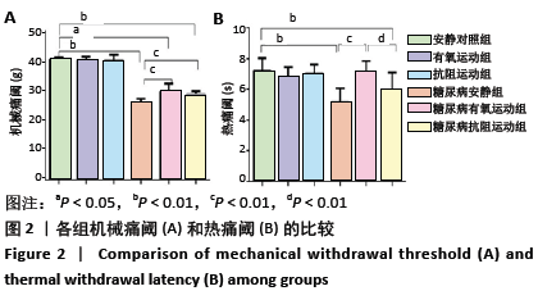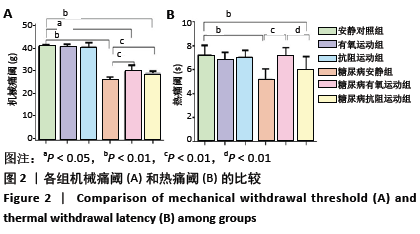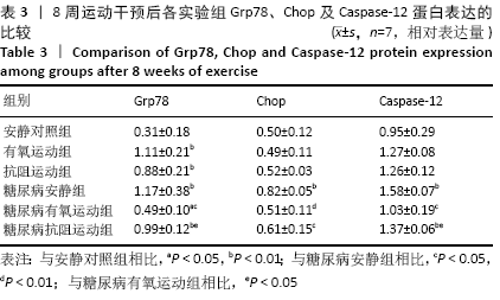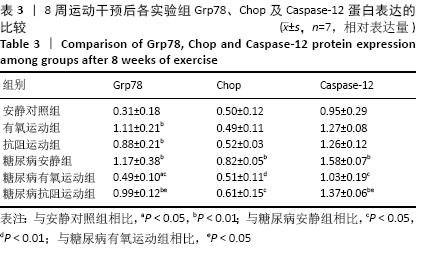[1] 税晓平,曹艳霞,李顺昌,等.不同运动对糖尿病大鼠周围神经结构功能的影响及机制[J].中国运动医学杂志,2018,37(10):857-864.
[2] YAO W, YANG X, ZHU J, et al. IRE1α siRNA relieves endoplasmic reticulum stress-induced apoptosis and alleviates diabetic peripheral neuropathy in vivo and in vitro. Sci Rep. 2018;8(1):2579.
[3] AUSTIN PJ, WU A, MOALEM-TAYLOR G.Chronic Constriction of the Sciatic Nerve and Pain Hypersensitivity Testing in Rats. J Vis Exp. 2012;(61):3393.
[4] 梁敏,王海牛,黄鹏,等.抗阻运动对2型糖尿病糖脂代谢异常患者干预效果的系统综述和Meta分析[J].中国组织工程研究,2019,23(35): 5718-5726.
[5] DIXIT S, MAIYA A, SHASTRY BA. Effects of Aerobic Exercise on Vibration Perception Threshold in Type 2 Diabetic Peripheral Neuropathy Population Using 3-sites Method: Single-blind Randomized Controlled Trial. Altern Ther Health Med. 2019;25(2):36-41.
[6] CHEN YW, HSIEH PL, CHEN YC, et al. Physical exercise induces excess hsp72 expression and delays the development of hyperalgesia and allodynia in painful diabetic neuropathy rats. Anesth Analg. 2013;163(2):482-490.
[7] ESLAMI R, GHARAKHANLOU R, KAZEMI A,et al.Does Endurance Training Compensate for Neurotrophin Deficiency Following Diabetic Neuropathy? Iran Red Crescent Med J. 2016;18(10):e37757.
[8] MA XQ, QIN J, LI HY, et al. Role of Exercise Activity in Alleviating Neuropathic Pain in Diabetes via Inhibition of the Pro-Inflammatory Signal Pathway.Biol Res Nurs. 2019;21(1):14-21.
[9] AGHDAM AM, SHAHABI P, KARIMI-SALES E, et al. Swimming Exercise Induced Reversed Expression of miR-96 and Its Target Gene NaV1.3 in Diabetic Peripheral Neuropathy in Rats.Chin J Physiol. 2018;61(2):124-129.
[10] KLUDING PM, PASNOOR M, SINGH R, et al. The effect of exercise on neuropathic symptoms, nerve function, and cutaneous innervation in people with diabetic peripheral neuropathy. J Diabetes Complications. 2012; 26(5):424-429.
[11] SEYEDIZADEH SH, CHERAGH-BIRJANDI S, HAMEDI NIA MR.The Effects of Combined Exercise Training (Resistance-Aerobic) on Serum Kinesin and Physical Function in Type 2 Diabetes Patients With Diabetic Peripheral Neuropathy (Randomized Controlled Trials). J Diabetes Res. 2020;2020: 6978128.
[12] NADI M, BAMBAEICHI E, MARANDI SM. Comparison of the Effect of Two Therapeutic Exercises on the Inflammatory and Physiological Conditions and Complications of Diabetic Neuropathy in Female Patients. Diabetes Metab Syndr Obes. 2019;8(12):1493-1501.
[13] MALANOTTE JA, KAKIHATA CMM, KARVAT J, et al. Jumping in aquatic environment after sciatic nerve compression: nociceptive evaluation and morphological characteristics of the soleus muscle of Wistar rats.Einstein (Sao Paulo). 2017;15(1):77-84.
[14] ANTUNES JS, LOVISON K, KARVAT J,et al.Nociceptive and Neuronal Evaluation of the Sciatic Nerve of Wistar Rats Subjected to Compression Injury and Treated with Resistive Exercise.Pain Res Manag. 2016:6487160.
[15] GALDINO GS, DUARTE ID, PEREZ AC. Participation of endogenous opioids in the antinociception induced by resistance exercise in rats.Braz J Med Biol Res. 2010;43(9):906-909.
[16] GALDINO G, ROMERO T, SILVA JF, et al. Acute Resistance Exercise Induces Antinociception by Activation of the Endocannabinoid System in Rats.Anesth Analg. 2014;119(3):702-715.
[17] 韩朔,朱笳悦,李潇,等.糖尿病周围神经病变中内质网应激诱导的细胞凋亡机制研究进展[J].医学综述,2018,24(22):4533 -4538.
[18] 谢映红,王巍.糖尿病大鼠坐骨神经内质网应激相关分子的动态变化[J].解剖学进展,2016,21(1):45 -48.
[19] 朴元林,吴群励,梁晓春,等.筋脉通胶囊对糖尿病大鼠周围神经内质网应激的影响[J].医学研究杂志,2014,43(11):29-32.
[20] 张亮,徐敏,庄向华,等.内质网应激与凋亡在糖尿病周围神经病变中的表达变化[J].山东大学学报(医学版),2017,55(8):13-17.
[21] EL-HORANY HE, WATANY MM, HAGAG RY, et al.Expression of LRP1 and CHOP genes associated with peripheral neuropathy in type 2 diabetes mellitus: Correlations with nerve conduction studies.Gene. 2019;702:114-122.
[22] PAN H, HUANG H, ZHANG L, et al. “Adjusting Internal Organs and Dredging Channel” Electroacupuncture Treatment Prevents the Development of Diabetic Peripheral Neuropathy by Downregulating Glucose-Related Protein 78 (GRP78) and caspase-12 in Streptozotocin-Diabetic Rats. Diabetes. 2019; 11(12):928-937.
[23] 李潇,姚伟洁,杨鑫伟,等.糖络宁对糖尿病周围神经病变大鼠坐骨神经功能及内质网应激 IRE1ɑ-XBP-1-CHOP通路的影响[J].湖南中医药大学学报,2019,39(7):841-847.
[24] CHEANG WS, WONG WT, ZHAO L, et al. PPARδ Is Required for Exercise to Attenuate Endoplasmic Reticulum Stress and Endothelial Dysfunction in Diabetic Mice. Diabetes. 2017;66(2):519-528.
[25] PAULA FMM, LEITE NC, BORCK PC, et al.Exercise training protects human and rodent β cells against endoplasmic reticulum stress and apoptosis.FASEB J. 2018;32(3):1524-1536.
[26] ZHANG Z, CUI D, ZHANG T, et al. Swimming Differentially Affects T2DM-Induced Skeletal Muscle ER Stress and Mitochondrial Dysfunction Related to MAM. Diabetes Metab Syndr Obes. 2020;13:1417-1428.
|

